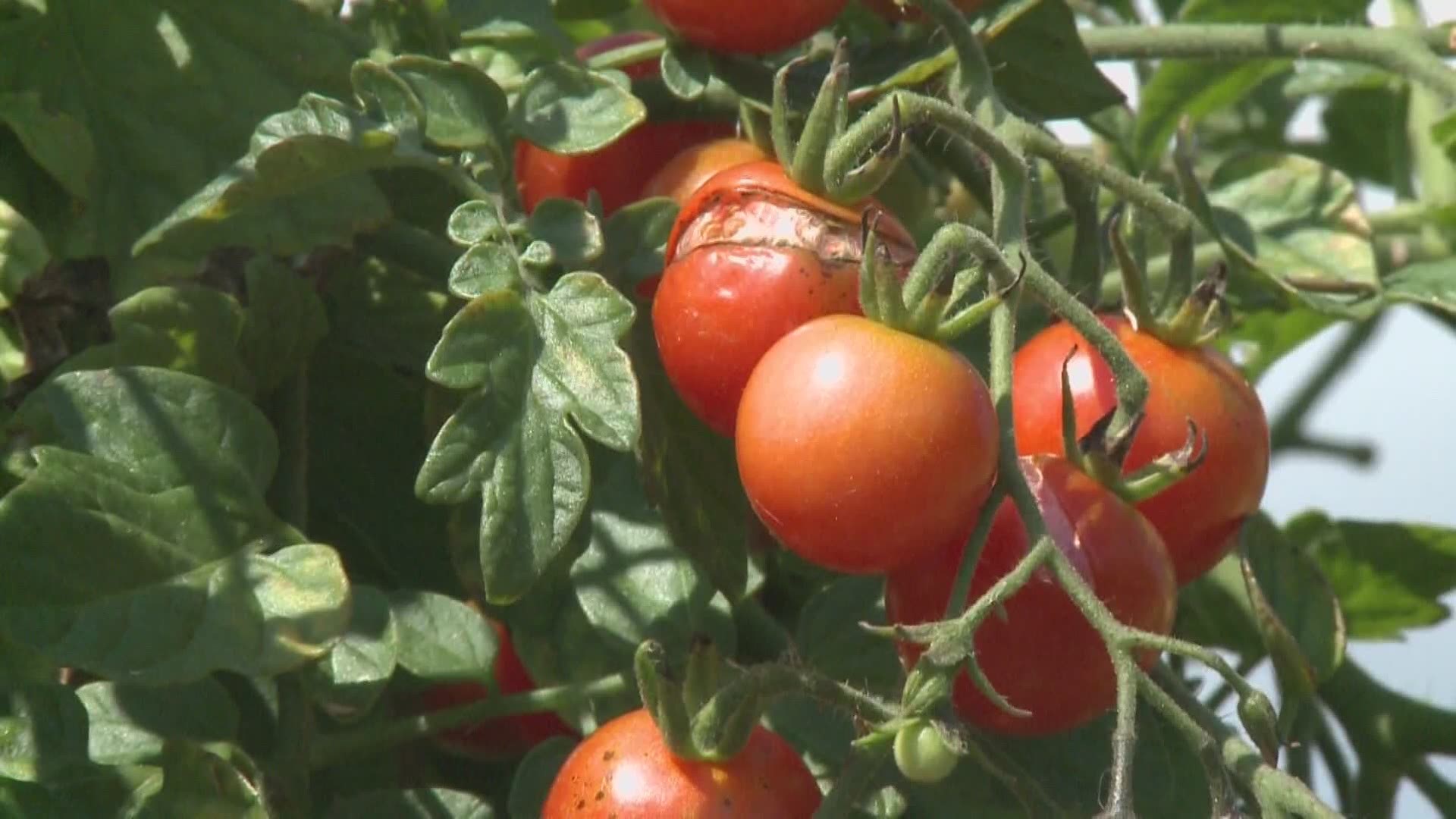MAINE, USA — On a rainy day Gardening with Gutner visited master gardener Tom Witwicki in his tomato house to learn more about taking care of tomatoes and pruning them for optimal fruit.
"Growing tomatoes is a challenge, and you need to start with what variety you want to grow," Witwicki explained.
There are two types of tomatoes: indeterminate and determinate.
Indeterminate tomatoes keep growing and need to be managed.
Determinate tomatoes stop at a certain point and are easier to grow.
Witwicki prefers indeterminate.
"If you want the really good tasting tomatoes, those are all indeterminate," he said.
Beginning with trellising, the master gardener showed his choice of a system of strings supported at the roof of his high tunnel. The plants are fixed to the string using a tomato clip.
When asked about tomato cages, Witwicki said he much prefers using other methods.
"I'm not a fan of tomato cages. It's hard to see what's going on inside the cage to prune, and the cages are rarely tall enough," he said. "Instead, I prefer a stake. You can see what's going on, and it's far easier I think. So either a string or a stake."
Witwicki explained that pruning is important because a tomato plant produces too much foliage when left on its own, which reduces the quality and earliness of the fruit as well. He showed how to prune the suckers, offshoots that grow between the main stem and branch, by pinching or using a clipper tool.
"As the plant develops there are certain things you want to do," the master gardener instructed. "As it sets fruit, you want to remove lower leaves below the fruiting cluster because it lets in more light and air into the plant."
When asked about fertilizer, Witwicki said he uses an organic fertilizer when he first plants and later a seaweed extract when watering or using a foliar spray.
It won't be long before the first tomatoes of the season will be ripe for picking, so make sure you're managing your tomatoes for the best results.

